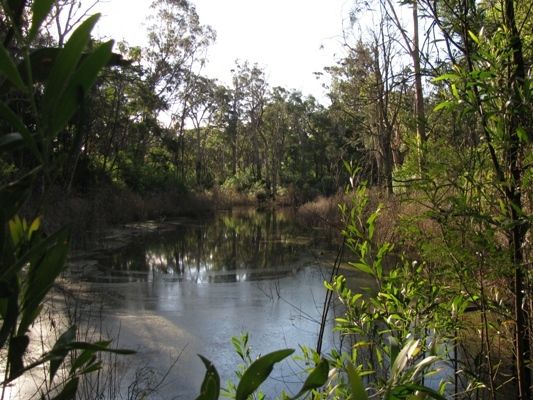boobooks's review
4.0
It's amazing the hidden stories of Australian history that we never learn about at school.
I only first heard about the story of the 'White Woman' when looking for places to camp in East Gippsland last Easter. I came across the White Woman's Waterhole in the Won Wron forest and was intrigued by the story behind the name as told in the DSE information.
We camped at this site on the last night of our trip and took a walk around the reedy waterhole where a stockman supposedly found the carvings of a European woman who'd been taken cative by local Aborigines in the early days of colonisation on a tree.

The information provided by the Bataluk Cultural Trail which traces significant Aboriginal sites through East Gippsland at the campsite gave a slightly differnt version. Apparently there was a darker side to this story, the mysterious white woman becoming a symbol of contested land, an excuse to drive the local Aboriginal population out and aide Eurporean settlement of the area.
In her book The Captive White Woman of Gipps Land: In Pursuit of the Legend Julie Carr traces the origin of the White Woman legend from Angus McMilan's initial report in the 1840s through the competing newspapers of the newly-established city of Melbourne and the journals from the expeditions that ventured into the 'unknown' Gippsland forest and mountains in search of their lost countrywoman.
The book also evokes a different place to the Gippsland we know today. When the expeditions set off, really not such a long time ago, it was into 'unmapped' territory and there were no roads from Melbourne - difficult to imagine now after being swept up in the heavy flow of cars and caravans making their way down the highway through the cleared green hills dairy farms to al the popular holiday spots in the Good Friday morning rush.
Carr has researched the White Woman extensively, analyising the legend from political, cultural and historial angles and also including an exhaustive survey of the many fictional stories and retellings the story has inspired since the 1840s. It is written in an academic style which doesn't make for easy reading however my interest in the subject helped me through, so my only criticism is that the book is perhaps not so widely acessible to readers. Carr does however do her best to uncover the mystery of the White Woman although it seems the truth of the legend really does lie lost somewhere in Gippsland.
I only first heard about the story of the 'White Woman' when looking for places to camp in East Gippsland last Easter. I came across the White Woman's Waterhole in the Won Wron forest and was intrigued by the story behind the name as told in the DSE information.
We camped at this site on the last night of our trip and took a walk around the reedy waterhole where a stockman supposedly found the carvings of a European woman who'd been taken cative by local Aborigines in the early days of colonisation on a tree.

The information provided by the Bataluk Cultural Trail which traces significant Aboriginal sites through East Gippsland at the campsite gave a slightly differnt version. Apparently there was a darker side to this story, the mysterious white woman becoming a symbol of contested land, an excuse to drive the local Aboriginal population out and aide Eurporean settlement of the area.
In her book The Captive White Woman of Gipps Land: In Pursuit of the Legend Julie Carr traces the origin of the White Woman legend from Angus McMilan's initial report in the 1840s through the competing newspapers of the newly-established city of Melbourne and the journals from the expeditions that ventured into the 'unknown' Gippsland forest and mountains in search of their lost countrywoman.
The book also evokes a different place to the Gippsland we know today. When the expeditions set off, really not such a long time ago, it was into 'unmapped' territory and there were no roads from Melbourne - difficult to imagine now after being swept up in the heavy flow of cars and caravans making their way down the highway through the cleared green hills dairy farms to al the popular holiday spots in the Good Friday morning rush.
Carr has researched the White Woman extensively, analyising the legend from political, cultural and historial angles and also including an exhaustive survey of the many fictional stories and retellings the story has inspired since the 1840s. It is written in an academic style which doesn't make for easy reading however my interest in the subject helped me through, so my only criticism is that the book is perhaps not so widely acessible to readers. Carr does however do her best to uncover the mystery of the White Woman although it seems the truth of the legend really does lie lost somewhere in Gippsland.
More...